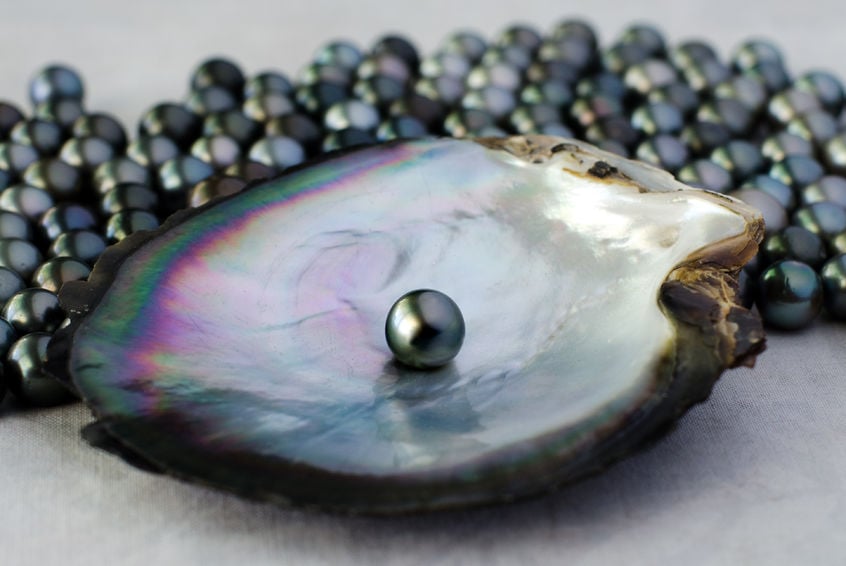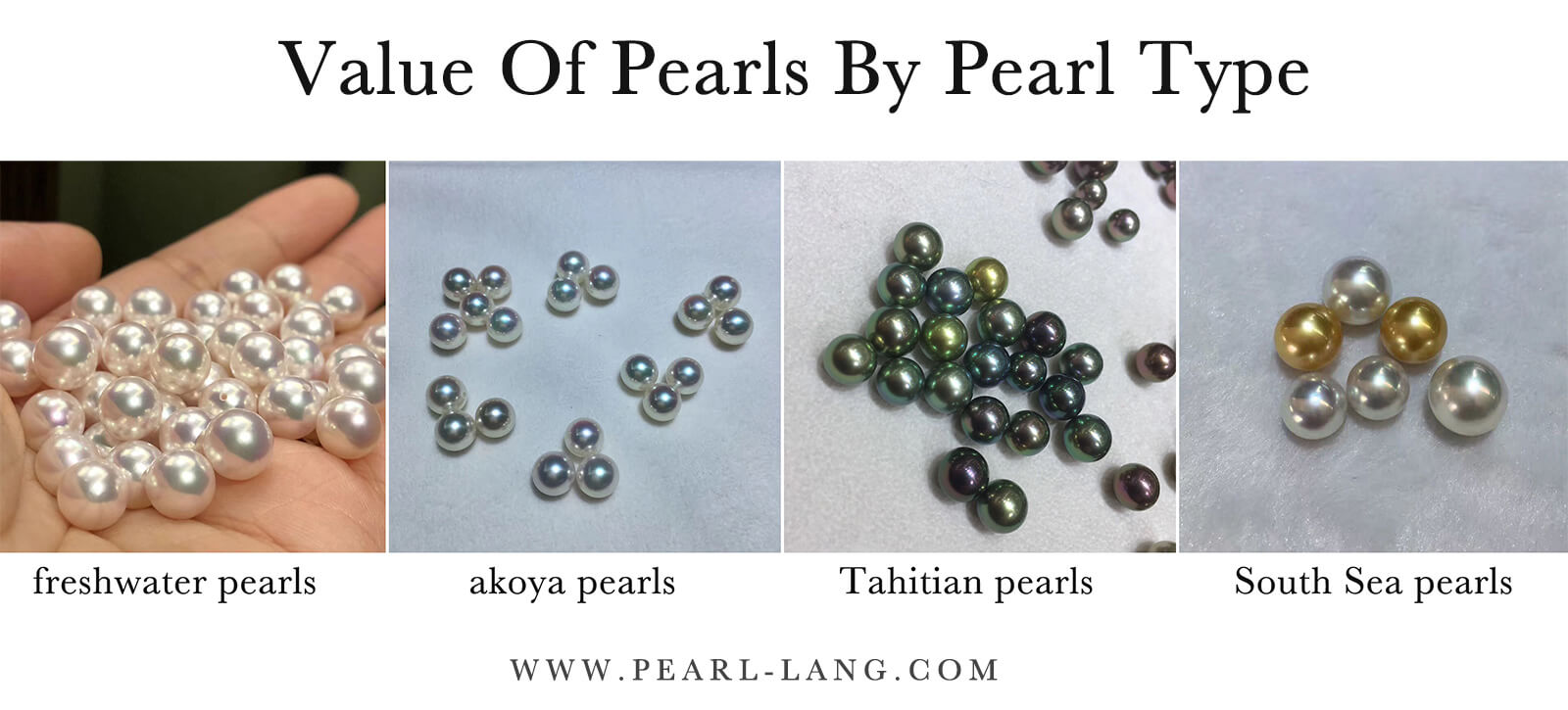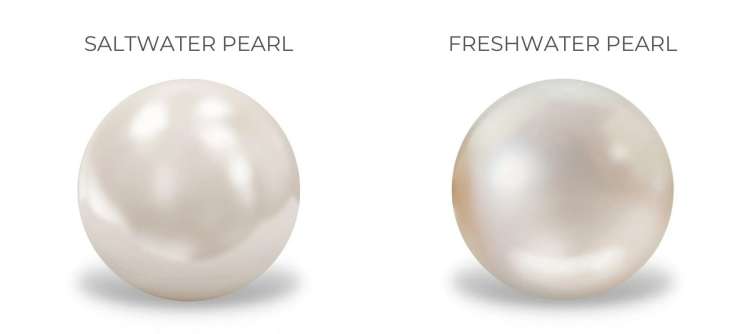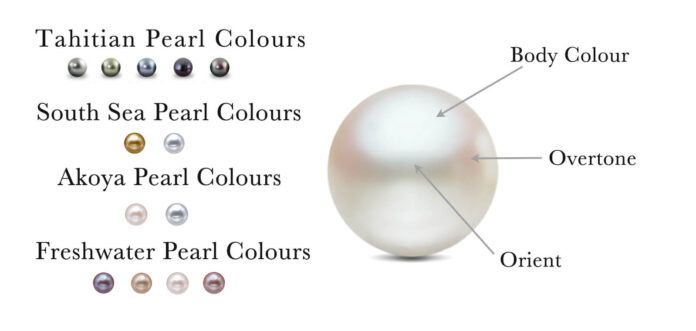Pearls’ worth can vary greatly depending on factors such as their size, shape, color, luster, and origin. However, on average, a pearl’s worth can range from $300 to $1500 per strand.
Pearls have been highly valued throughout history, and their worth has been influenced by cultural, economic, and fashion trends. The value of pearls is determined by their quality, rarity, and beauty. Natural pearls are the rarest and most expensive type, while cultured pearls are more affordable but still valuable.
The most valuable pearls are those with a round shape, high luster, and minimal blemishes. However, pearls with irregular shapes, unique colors, and historical significance can also command high prices. Overall, pearls’ worth is subjective and dependent on the buyer’s preferences and willingness to pay.
The Allure Of Pearls
Pearls have captivated people for centuries with their timeless elegance and cultural significance. They hold a special place in the world of jewelry, symbolizing luxury, sophistication, and natural beauty. Let’s explore the allure of pearls and their value in the modern world.
Timeless Elegance
Pearls have endured as a symbol of timeless elegance, gracing the necks, ears, and wrists of royalty, celebrities, and fashion icons. Their lustrous, iridescent sheen adds a touch of sophistication to any outfit, making them a coveted accessory for formal occasions and everyday wear alike.
Cultural Significance
In various cultures, pearls hold profound symbolism, representing purity, wisdom, and prosperity. From ancient myths and legends to modern rituals and ceremonies, pearls are deeply embedded in cultural traditions worldwide. They are often passed down through generations, signifying heritage and timeless beauty.
Pearl Formation
Pearls are unique gemstones that have captivated humans for centuries with their natural beauty and lustrous appearance. But have you ever wondered how these exquisite pearls are formed? The process of pearl formation is truly fascinating and involves the intricate interplay between nature and mollusks.
Natural Vs Cultured Pearls
When it comes to pearls, there are two main types: natural pearls and cultured pearls. Natural pearls are formed without any human intervention, while cultured pearls are created with the help of humans. The formation process for both types of pearls, however, follows a similar path.
The Role Of Mollusks
Mollusks, particularly oysters and mussels, play a crucial role in the formation of pearls. These mollusks have a protective mechanism to defend themselves against irritants that enter their shells, such as parasites or debris. When an irritant enters the mollusk’s shell, it triggers a natural response.
The mollusk begins to secrete a substance called nacre, also known as mother-of-pearl, which is made up of layers of calcium carbonate crystals. The nacre is deposited around the irritant, gradually forming a pearl. This process can take several years to complete, resulting in the formation of a beautiful and valuable gem.
In the case of natural pearls, the irritant that initiates the pearl formation process occurs naturally within the mollusk’s environment. It could be a grain of sand, a small organism, or even a fragment of shell. The rarity of natural pearls makes them highly prized and significantly more expensive than cultured pearls.
On the other hand, cultured pearls are created through a technique called pearl farming. Farmers carefully introduce irritants, such as pieces of shell or beads, into the mollusk to stimulate the pearl formation process. This method allows for a more controlled and predictable production of pearls.
It is important to note that the quality and value of a pearl are determined by various factors, including its size, shape, color, luster, and surface quality. These characteristics are influenced by both the type of mollusk and the conditions in which the pearl is formed.
In conclusion, the formation of pearls is a remarkable natural process that involves the cooperation between mollusks and their environment. Whether they are natural or cultured, pearls continue to be highly sought after for their elegance and timeless appeal.
Types Of Pearls
Explore the world of pearls and their worth, ranging from freshwater to Akoya, South Sea, and Tahitian pearls. The value of pearls depends on factors like size, shape, luster, surface quality, and color, making them a unique and sought-after gem in the jewelry industry.
Freshwater Vs Saltwater
Freshwater and saltwater pearls are two distinct types of pearls, each with its own unique characteristics and value.
Freshwater pearls, as the name suggests, are cultivated in freshwater environments such as lakes and rivers. These pearls are typically produced by mussels and are known for their affordability and wide range of shapes and colors. Due to the cultivation process, freshwater pearls can be more irregular in shape compared to saltwater pearls.
Saltwater pearls, on the other hand, are grown in saltwater environments such as oceans and seas. They are usually produced by oysters and are highly valued for their lustrous appearance and round shape. Saltwater pearls are often considered more valuable and luxurious compared to freshwater pearls.
Both freshwater and saltwater pearls can vary in size, with larger pearls generally commanding higher prices. The value of pearls is also influenced by factors such as color, luster, surface quality, and the presence of any unique characteristics or flaws.
Notable Varieties
There are several notable varieties of pearls, each with its own distinct characteristics and value:
- Akoya Pearls: Akoya pearls are saltwater pearls primarily cultivated in Japan. They are known for their high luster, round shape, and classic white or cream colors.
- Tahitian Pearls: Tahitian pearls, also known as black pearls, are cultivated in French Polynesia. They come in a range of dark hues, including black, gray, and peacock green, and are highly sought after for their unique colors.
- South Sea Pearls: South Sea pearls are saltwater pearls produced in Australia, Indonesia, and the Philippines. They are known for their large size, golden hues, and beautiful luster.
- Baroque Pearls: Baroque pearls refer to pearls that have irregular or non-symmetrical shapes. These pearls can be found in both freshwater and saltwater varieties and are often appreciated for their unique and artistic appeal.
These are just a few examples of the many varieties of pearls available in the market. Each variety offers its own distinct beauty and charm, making pearls a versatile and timeless choice for jewelry enthusiasts.

Credit: www.thepearlsource.com
Factors Influencing Pearl Value
How Much are Pearls Worth? Several factors influence the value of pearls, including their size, shape, luster, surface quality, and color. The rarity of natural pearls and the culturing process also impact their worth. Additionally, the demand for specific types of pearls in the market can significantly affect their value.
Factors Influencing Pearl Value When it comes to determining the value of pearls, several factors come into play. These factors include the size and shape of the pearl, its color and luster, surface quality, and nacre thickness. Each of these elements contributes to the overall worth of a pearl. Let’s delve into each factor to understand how they impact the value of pearls.
Size And Shape
The size and shape of a pearl significantly affect its value. Larger pearls are generally more valuable than smaller ones. Additionally, perfectly round pearls are highly sought after and command a higher price. However, unique and rare shapes, such as baroque or teardrop pearls, can also be quite valuable.
Color And Luster
The color and luster of a pearl play a crucial role in determining its worth. Pearls come in a wide range of colors, including white, pink, cream, and black. The rarer and more vibrant the color, the more valuable the pearl becomes. Luster refers to the reflective quality of the pearl’s surface. Pearls with a high luster, characterized by a deep, mirror-like shine, are considered more valuable.
Surface Quality
The surface quality of a pearl is another important factor in determining its value. Pearls with a smooth and clean surface, free from blemishes, are highly prized. Any visible imperfections, such as spots, pits, or cracks, can significantly decrease the value of a pearl. A pearl with excellent surface quality is more desirable and commands a higher price.
Nacre Thickness
Nacre thickness refers to the layers of nacre that make up the pearl. Nacre is the substance secreted by the mollusk that forms the pearl. Pearls with a thick layer of nacre are considered more valuable because they have a higher durability and luster. Thicker nacre also provides a more solid feel and enhances the overall quality of the pearl. In conclusion, when determining the value of pearls, factors such as size and shape, color and luster, surface quality, and nacre thickness all play a significant role. These factors collectively contribute to the beauty, uniqueness, and overall worth of a pearl. By understanding these factors, you can make informed decisions when purchasing or valuing pearls.
Pearl Grading Systems
Pearl grading systems play a crucial role in determining the value of pearls. Understanding these systems is essential for buyers and collectors alike. There are different grading systems used for pearls, each with its own criteria and standards. Let’s explore the various pearl grading systems in detail.
Aaa-a System
The AAA-A system is one of the most widely used grading systems for pearls. It categorizes pearls based on their luster, surface quality, shape, color, and size. Pearls graded AAA exhibit the highest levels of luster and are virtually free of any surface blemishes. As the grading descends to AA and A, the pearls may display slightly lower luster and more imperfections.
Tahitian System
The Tahitian pearl grading system is specifically used for black pearls. These pearls are graded based on their luster, surface quality, shape, color, and size. The highest grade, known as “circled,” represents pearls with the most exceptional luster and minimal surface imperfections. As the grading descends, the pearls may exhibit lower luster and more noticeable blemishes.
Understanding The Scales
It’s important to understand the scales used within each grading system. For example, the AAA-A system involves a scale of AAA, AA, and A, with AAA being the highest grade. Similarly, the Tahitian system uses terms such as “circled,” “semi-circled,” and “lightly circled” to denote different grades. By familiarizing yourself with these scales, you can make informed decisions when purchasing pearls.
Market Trends And Pearl Prices
Pearls have long been prized for their timeless elegance and natural beauty. Market trends and pearl prices have always been of interest to both buyers and sellers, as they fluctuate in response to various factors. Understanding historical price fluctuations and current market rates is essential for anyone involved in the pearl industry.
Historical Price Fluctuations
Historical records show that pearl prices have experienced significant fluctuations over the centuries. In the 19th century, natural pearls were among the most valuable gems, often fetching prices that surpassed those of diamonds. However, the development of cultured pearls in the early 20th century led to a decline in the value of natural pearls. Market demand and economic conditions have also played key roles in shaping historical price trends.
Current Market Rates
The current market rates for pearls are influenced by a variety of factors, including quality, size, color, and luster. Natural pearls continue to command high prices due to their rarity, while cultured pearls are more widely available and thus generally more affordable. The popularity of specific pearl types, such as Akoya, Tahitian, and South Sea pearls, also impacts their market value. Additionally, global market trends and consumer preferences contribute to the ever-changing landscape of pearl prices.
Pearl Jewelry And Investment
Pearls are valued based on factors such as size, shape, luster, and surface quality. High-quality pearls can be a sound investment, with prices ranging from a few hundred to several thousand dollars per strand. When evaluating the worth of pearls, it’s essential to consider these characteristics to make an informed investment decision.
Choosing The Right Pearl Jewelry
Consider quality, size, shape, and luster when selecting pearl jewelry.
Look for authentic pearls with minimal blemishes and a smooth surface.
Opt for round pearls for classic elegance or baroque for a unique look.
Pearls As An Asset Class
Pearls offer long-term value and diversification in investment portfolios.
Investing in pearls can provide financial security and stability.
Consider certified pearls for investment purposes to ensure authenticity.

Credit: www.pearl-lang.com
Maintaining Pearl Value
Maintaining the value of pearls is essential when determining their worth. By storing them properly, avoiding harsh chemicals, and regularly cleaning them, you can ensure that your pearls retain their beauty and value.
Proper Care And Storage
Pearls should be stored separately from other jewelry to prevent scratching.
- Keep pearls away from chemicals such as perfume and hairspray.
- Wipe pearls with a soft cloth after wearing to remove oils and dirt.
Restoration And Revaluation
If pearls lose luster, consult a professional for cleaning and restringing.
- Revaluation by a gemologist can determine the current value of your pearls.
- Restoration services can enhance the appearance of aged or damaged pearls.
Preserving the value of your pearls is essential to retain their beauty and worth.
Proper care and storage, as well as restoration and revaluation, play key roles in maintaining pearl value.
The Future Of Pearl Valuation
As the world of jewelry evolves, the valuation of pearls is also experiencing a transformation. Let’s explore the future of pearl valuation in terms of Innovations in Cultivation and Changing Consumer Preferences.
Innovations In Cultivation
New techniques are enhancing pearl cultivation methods, leading to improved quality.
- Use of advanced technology in pearl farming
- Development of eco-friendly farming practices
- Creation of unique pearl varieties
Changing Consumer Preferences
Consumers are seeking pearls that reflect their modern tastes and values.
- Preference for sustainably sourced pearls
- Interest in unique and customized pearl jewelry
- Shift towards versatile pearl pieces for everyday wear

Credit: www.whitevictoria.com
Frequently Asked Questions
How Are Pearls Valued?
Pearls are valued based on their size, shape, color, luster, and surface quality. Natural pearls are rare and command a higher value than cultured pearls. The demand for pearls and the prevailing market conditions also affect their value.
What Makes Pearls Valuable?
Pearls are valuable due to their rarity, beauty, and cultural significance. The process of cultivating pearls is time-consuming and labor-intensive, which contributes to their value. High-quality pearls have a unique luster and iridescence that makes them highly sought after by collectors and jewelry enthusiasts.
How Can You Tell The Value Of A Pearl?
A pearl’s value is determined by its size, shape, color, luster, and surface quality. A certified appraiser can determine the value of a pearl based on these factors. However, the value of a pearl is ultimately subjective and depends on the buyer’s preferences and the prevailing market conditions.
What Is The Average Price Of A Pearl?
The price of a pearl varies depending on its quality, size, and type. Cultured pearls can range from a few dollars to several thousand dollars per pearl. Natural pearls are much rarer and can fetch prices of tens or even hundreds of thousands of dollars per pearl.
Conclusion
To sum up, the value of pearls varies based on factors like type, size, shape, and luster. Understanding these aspects can help determine a pearl’s worth accurately. Whether for personal collection or investment, knowing the value of pearls is essential for making informed decisions.
Explore and appreciate these timeless gems.


